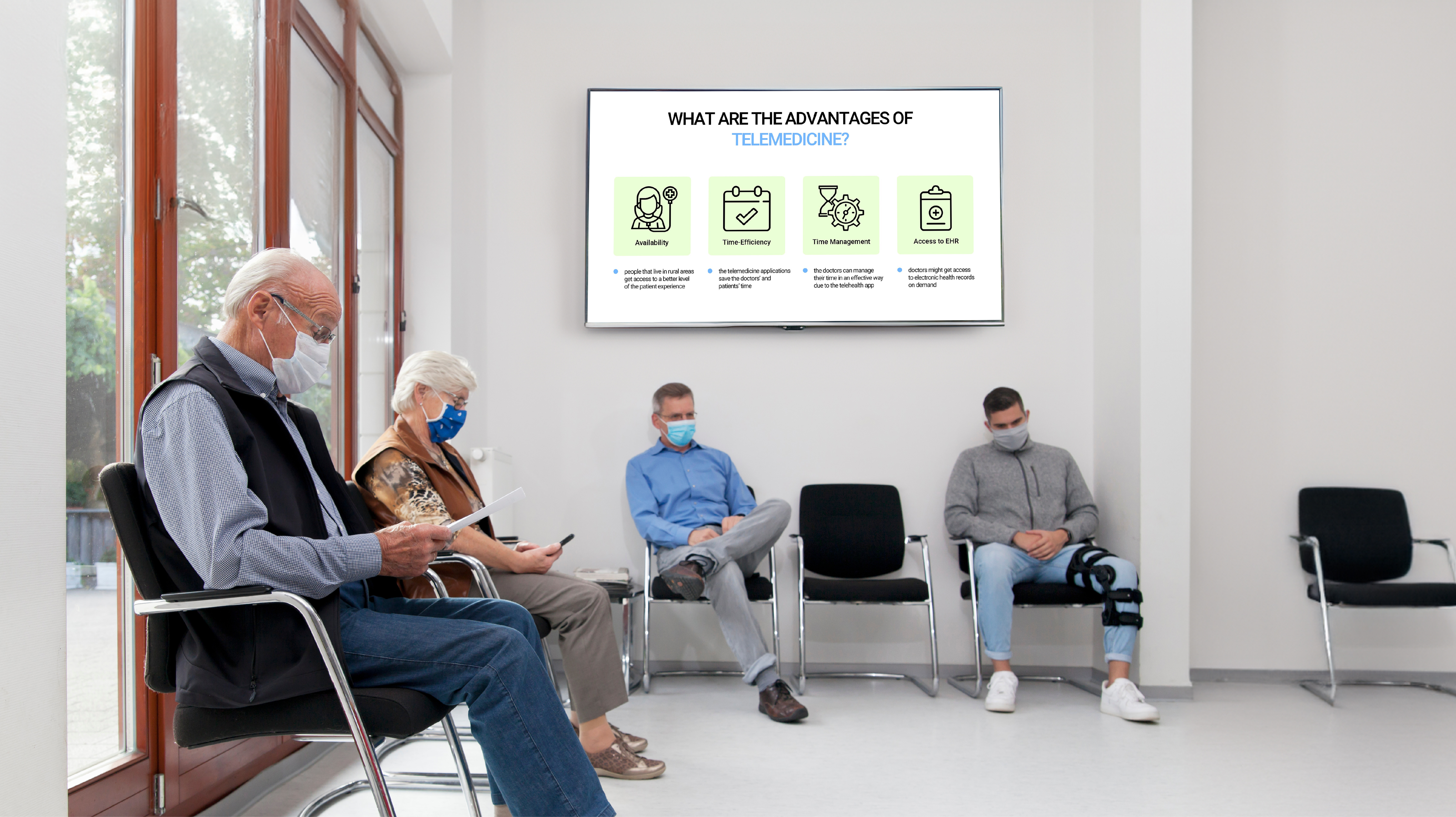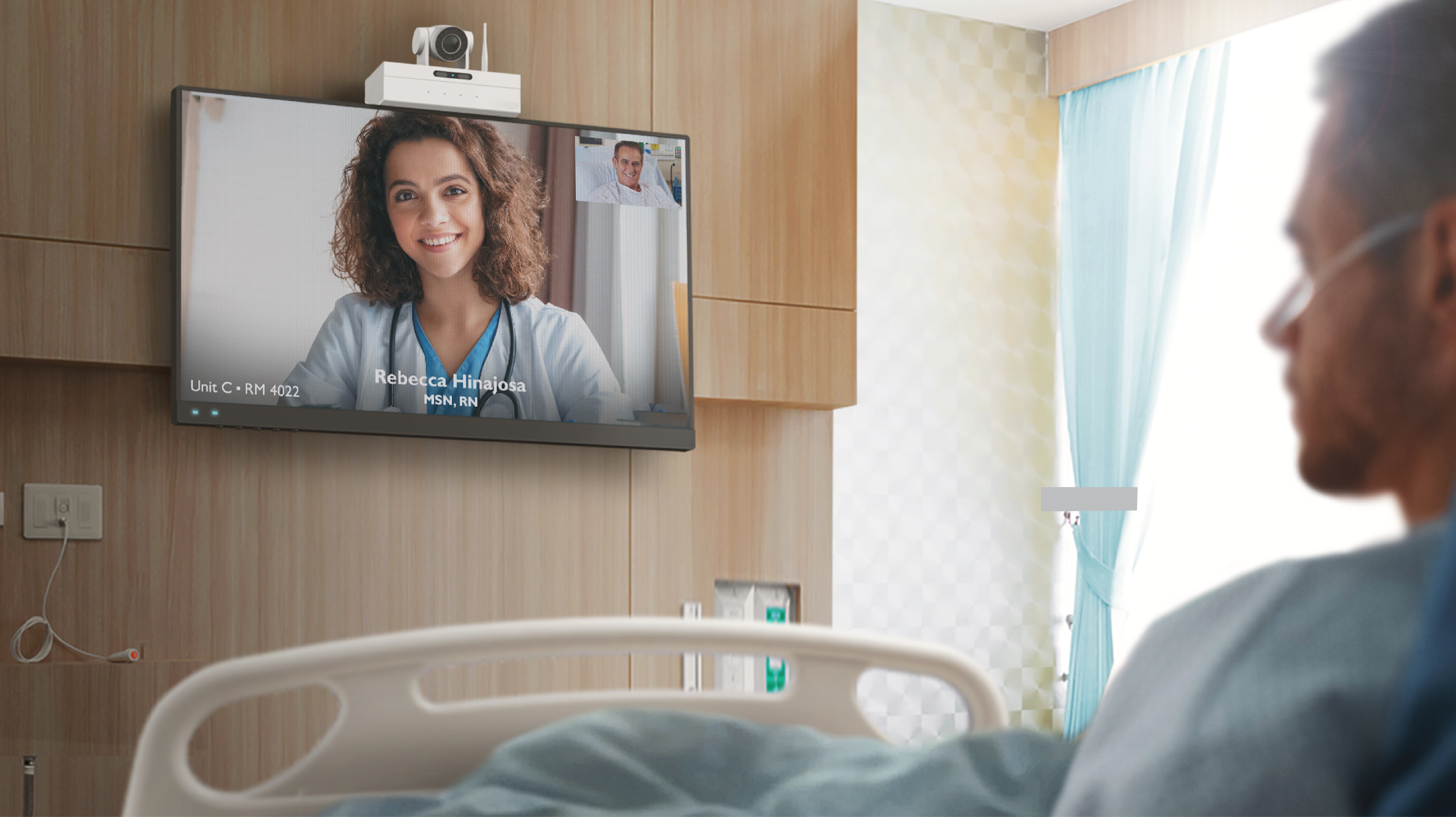The healthcare landscape has undergone a significant transformation in patient care. A major component of this shift has been the integration of digital technologies to enhance patient outcomes.
Among these advancements, telehealth and digital signage stand out for their impact on healthcare delivery. But how exactly have they done so? What is the synergy between these two innovative solutions? How do telemedicine solutions and digital signage in healthcare enhance patient concerns? We answer these questions in this blog.
Telehealth and Digital Signage: Bridging the Gap in Healthcare Delivery
Before discussing how telehealth and digital signage enhance patient care, let’s first define them and their benefits for healthcare delivery.
Telehealth
Telehealth refers to the digital communication technologies that deliver medical care, consultation, and health education at a distance. It encompasses telemedicine and remote patient monitoring in modern healthcare.
Telehealth benefits:
- Accessibility: Telehealth makes healthcare accessible for patients in remote or underserved geographical locations, ensuring that geography does not limit healthcare availability.
- Convenience: Modern patients want modern solutions — and it’s no different with healthcare. With telehealth, patients can consult with healthcare professionals from the comfort of their own homes. With virtual patient care, busy professionals, differently abled patients, and stay-at-home parents have convenient access to healthcare.
- Cost-effectiveness: Telehealth reduces the costs associated with in-person visits for patients and healthcare providers. This includes savings on travel, accommodation, and hospital infrastructure.
- Continuity of care: Remote patient monitoring has been a game-changer in patient care for chronically ill patients. These solutions promote proactive caregiving, leading to timely interventions and better health outcomes.
Digital Signage
Digital signage is the use of electronic displays to convey information dynamically. Remember those dynamic TVs in a hospital’s waiting area? That’s one form of digital signage in healthcare.
Digital signage is a robust communication system that streamlines healthcare operations with on-the-go updates. Solutions like L Squared help healthcare providers enhance patient experience with an easy-to-use signage solution that informs, engages, and notifies patients and staff from dynamic screens.
Digital signage benefits:
- Real-time communication: This is where digital signage excels at. Using digital screens, you can share staffing updates, patient information, and other critical alerts so staff and patients are always in the know.
- Wayfinding: Think of digital signage as a personal tour guide around hospital infrastructure. Interactive kiosks guide patients and visitors through complex hospital layouts, reducing stress and improving the overall experience.
- Patient engagement: Nobody likes to wait, especially in hospitals. You can use digital signage to display informative and engaging content in waiting rooms, helping reduce anxiety and perceived waiting times.
- Emergency notification: In cases of security threats or natural calamities, digital signage in healthcare functions as an effective emergency notification system to alert patients and staff about best practices, safety routes, and more.

The Synergy of Telehealth and Digital Signage
Integrating telehealth and digital signage in healthcare presents a unique opportunity to enhance patient care remotely. Here’s how these two technologies complement each other:
Enhancing Patient Engagement and Education
Telehealth services rely heavily on patient engagement for successful outcomes. Digital signage can play a pivotal role in this regard by:
- Promoting telehealth benefits: Digital displays in healthcare can promote telehealth services by highlighting the benefits and use cases, and encouraging patients to try these options.
- Guiding telehealth consultations: Interactive digital signage can provide step-by-step instructions on how to set up and use telehealth platforms, making the technology more accessible to patients of all ages.
Remote Patient Monitoring
Remote patient monitoring (RPM) involves the use of digital technologies to monitor patient data outside of traditional healthcare settings. Digital signage enhances RPM by:
- Displaying health metrics: Imagine having a digital screen for patients to track their vitals, medicine schedules, and best practices at home. It’s like having a personal healthcare assistant right by their side!
- Alert systems: Digital signage can also be part of an alert system. If something critical changes in a patient’s health data, it can immediately notify caregivers or healthcare providers. This means they can step in right away if needed.
Virtual Patient Care
Virtual patient care involves remote interactions between patients and healthcare providers. Digital signage enhances this with:
- Telemedicine solutions: Digital signage can integrate with telemedicine platforms to provide real-time updates on appointment statuses, wait times, and important notifications.

The Future of Telehealth and Digital Signage in Healthcare
With the growing use of innovative technology in healthcare, telehealth and digital signage will remain integral parts of patient care in the years to come. We predict these solutions will only get more advanced.
With the rising use of AI, incorporating it into digital signage can enhance telehealth by providing predictive analytics and personalized health recommendations. Hospitals and clinics can create targeted healthcare plans for patients using data from telehealth consultations and RPM devices. For example, digital signage could display personalized health tips or reminders based on a patient's telehealth data.
Healthcare providers can also use augmented reality (AR) to provide virtual demonstrations of telehealth equipment or health procedures, enhancing patient and staff understanding.
Choosing the Right Solution for Maximum Impact
Choosing the right solution is key to truly harnessing the benefits of telehealth and digital signage. Since new technology implementation is a costly and expansive process, be sure to choose solutions that can grow with your hospital’s evolving needs.
Invest in technologies that are easy to use for both patients and healthcare providers. This will make your tools accessible, easy to operate, and manage. Additionally, ensure that the telehealth and digital signage systems you select can integrate seamlessly with your existing healthcare infrastructure. Compatibility with electronic health records (EHR) and other digital tools is essential for smooth operation.
If you’re looking for expert advice, talk to our signage pros at L Squared to ensure successful digital signage adoption.





